I’d been missing Keith Giffen’s work for a while. It felt like for pretty much my comic-reading lifetime, there’d been new Keith work available. Sometimes it was comics he wrote; other times, he was the artist; more often than not, he was involved in the story and the art in some way, whether it be plotting or co-scripting on the writing end, or breaking down pages for artists like Barry Kitson, Simon Bisley, or Kevin Maguire.
But Keith had been largely absent from comics since the Inferior Five series he and Jeff Lemire did a few years back.
You hear things about creators when you work in comics. I’d heard Keith was ailing here and there. But we talked a bit a couple years back. He’d mentioned somewhere that one of his dream projects was to adapt ‘Salem’s Lot to comics. I wanted to make that happen for him. But in the meantime, I had something else, something he might find of a similar type, that I wanted him to pencil. The plan was for Keith to break down the pages and Ashley Wood would finish them. It would’ve been great, but even more than that, it would’ve been a chance for me to work directly with Keith, something I’d always wanted to do.
In my prior role, we published an older work of his, The Bible: Eden, a straight if risqué re-telling of some early Bible stories that he and Dave Elliott wrote and Scott Hampton illustrated. But they did the work for Penthouse magazine, and IDW just collected it into an oversize hardcover. And it came out right as I was taking over as EiC. So that didn’t count as working with him.
I did get one chance to do so. I was putting together a Star Trek/Legion of Super-Heroes crossover series, and on each issue, I wanted a classic Legion artist to do the variant cover, while Phil Jimenez illustrated the primary cover on each issue. I basically wanted to do those variants so I’d have a chance to work with guys like Keith, like the late Steve Lightle, like Mike Grell. But mostly, it was about Keith.
We had a few calls to discuss, and he was wonderfully crusty in that charming East Coast way. Much of the call was spent lamenting the ways the comic industry had changed around him. Which was funny, because he also changed so much over the course of his career. More than maybe any artist I can think of. His still evolved from his early Kirby influence to a style influenced by José Muñoz (which exposed me to Munoz’s work for the first time) to work that also picked up influences from people he worked with along the way. This series had a Bisley influence; that one was inspired by his work with Kevin Maguire. And so on. Keith was a searcher, a true artist, constantly evolving and willing to alienate fans of his clean, accessible style as he evolved into delivering these dense nine-panel grids packed with odd angles and partial characters.
He could be funny—so funny, as his work on books like Ambush Bug, The Heckler, that great Legion of Substitute Heroes one-shot, and Justice League proved; he could deliver straight super heroics, as he did in his early days on books like Doctor Fate, The Defenders, and his early Legion of Super-Heroes work, especially with inker Larry Mahlstedt.
He could create characters that resonated far beyond those characters’ early appearances (see: Rocket Raccoon, Lobo). Keith could run big events, like Invasion!
His occasional appearances in books you wouldn’t expect always thrilled me: pages in Wonder Woman 300; a fill-in on Daredevil or World’s Finest or Spectacular Spider-Man, and so on. He could do it all, it seemed, and he did. I adored his work, in all its stages, and for all the pages he touched—maybe more than anyone else working today—I always wanted more. And because he did so much so well for so long, I just assumed there would always be more.
There will not. We lost Keith this week, and despite not knowing him well, I feel like I knew him perfectly well through his work. I’m deeply saddened by his loss, so I can only imagine how close friends, collaborators, and his family feel. It’s a loss for all of us. And it’s one I don’t quite know how to reconcile, so I’ve been spending some time going through his many works and thought I’d share a lot of them here in tribute to him.
By the way, Keith did do that the first Star Trek/Legion cover for me, and it delivered exactly what I hoped it would:




Beyond that cover, there’s no easy way to sum up the totality of Keith’s body of work, not in this space, anyway. And really, doing so would pale in comparison to just showing what he did, what he gave to all of us. So here’s a wide array of Keith’s work, from his earliest published work up to the final Inferior Five miniseries, and even with all of this, it leaves out so much other good work. But it’s a start.
The first issue of Legion of Super-Heroes I ever picked up was issue 294, the final chapter of “The Great Darkness Saga.” I was immediately hooked. Who wouldn’t be?And any time Keith touched a Legion comic: throughout this first run, onto the Baxter series, and then “Five Years Later” and onward, I was there. So let’s start with his Legion work, which just dazzled me:









I remember when Keith’s style loosened — you can certainly see the evolution even in his renditions of Darkseid from LSH 293 and 294, and then his cameo in a Legion Annual a few years later.
And I think I found the very page where his influences were changing with his style. It happened here, in Legion 307. Compare his work on the cover and then the next two pages included here and you can see a definite change in his approach to faces, as his style gets looser and lighter. I remember some fans balking at the time. Not me. I loved it all. Also included here are a few pages from his Legion of Substitute Heroes one-shot, which is just a blast to read and to look at.






Keith’s early work was very much a case of an artist working out his various influences as he developed his own style. But even in these early works, you can see that he was already good and destined to be someone really special.

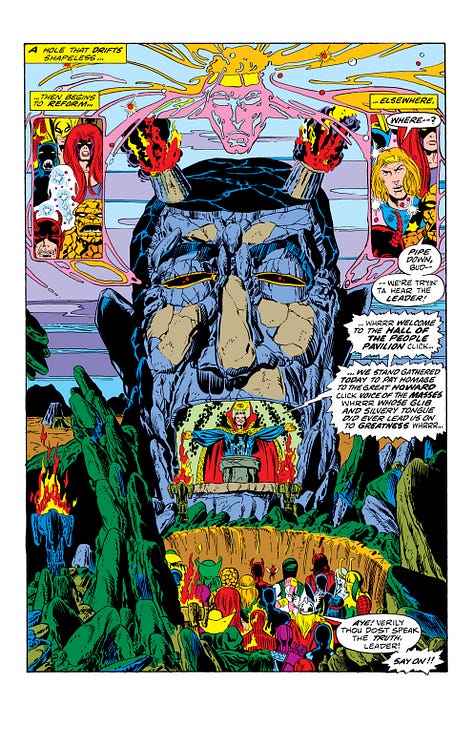







I can’t imagine that when Keith first drew Ambush Bug (in DC Comics Presents 52, the first image below) that he would’ve expected the goofy character to take on the life that he did. But in Keith’s hands, the character, as close to a Looney Tunes character as the DC universe has ever known, took on a real life of his own. Enough so that the final image in this set isn’t by Keith but is instead a cameo in the first issue of Boris the Bear by James Dean Smith.


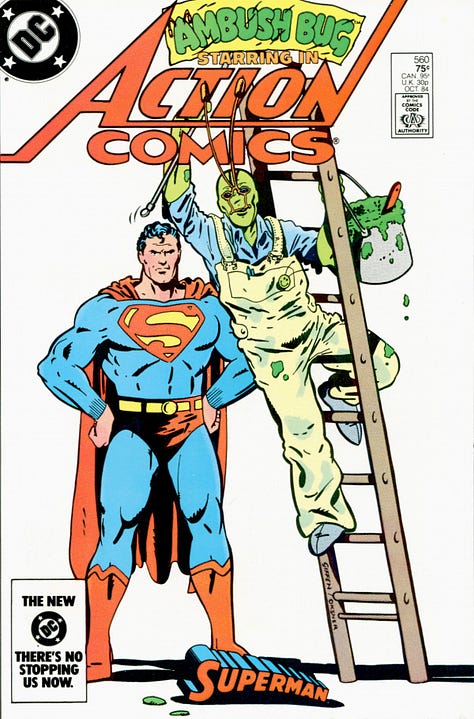



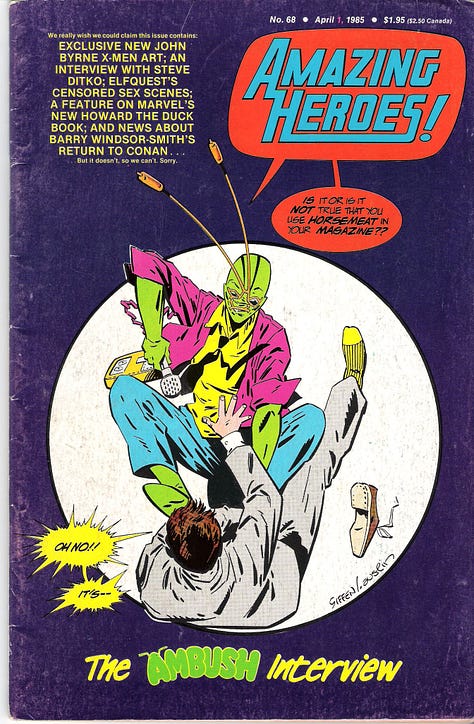


Speaking of characters Keith co-created, here are the first appearances of a couple more: Rocket Raccoon (in Marvel Preview 7 with writer Bill Mantlo), and Lobo (with writer Roger Slifer, from the pages of Omega Men 3), along with a few that maybe didn’t quite have the same lasting impact but were pretty fun in their own right, Trencher, The Heckler, and Video Jack:







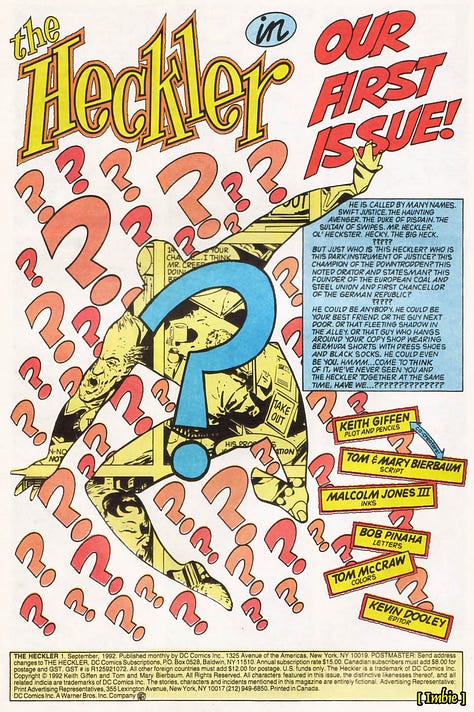

And more Keith work, including the aforementioned cameos where he made Black Widow and Daredevil, Spider-Man, and Batman and Superman look so odd and cool.


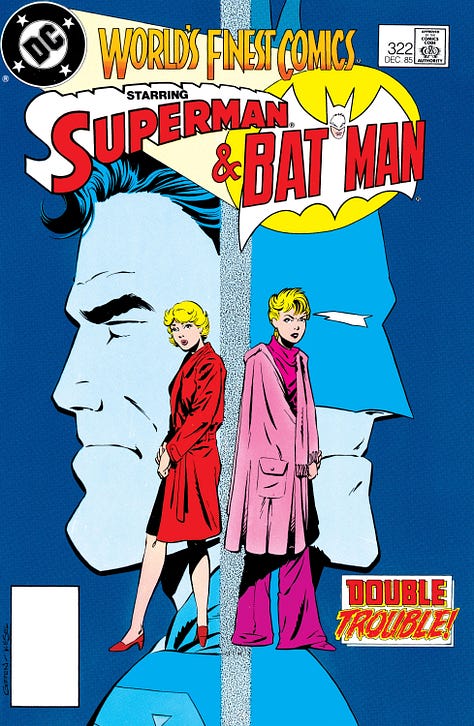






Much like with the Deadman image directly above, Keith’s work in the second issue of Invasion! showed a distinct Kevin Maguire influence, but like with everyone’s work that Keith referenced, he did it so well and he still made it uniquely his own:







Some of the last work I remember seeing from Keith was his work on OMAC, and then Inferior Five. Nothing inferior about these pages. Whatever style he employed over the years, Keith never took shortcuts. And he was never boring.






With all of this work, produced over just about 40 years, it’s hard to lament the fact that we won’t be getting any more Keith work, and yet I do. It’s great to visit the great many things he produced over the years, and I do, but I also wanted to know what kinds of comics he might make into his 70s and beyond. Much like when I was 10 and first noticed his work, I still wanted more. But man, am I glad I got to experience as much of his work as I did. Thanks for everything, Keith.






A wonderful tribute to and retrospective of a brilliant creator. Thanks for including so much of Keith's wonderful art. I absolutely LOVED his "dense nine-panel grids packed with odd angles and partial characters" style. A true original and iconoclast.
Thanks for this one, Chris. As you say, for those of us of a certain age, his work is so meaningful. High school in the 80s for me is littered with memories of Ambush Bug, his Justice League, and yes... Legion. That Substitute Heroes One Shot. My daughter quotes his JL and she wasn't even born then. So, so many amazing works. ah!